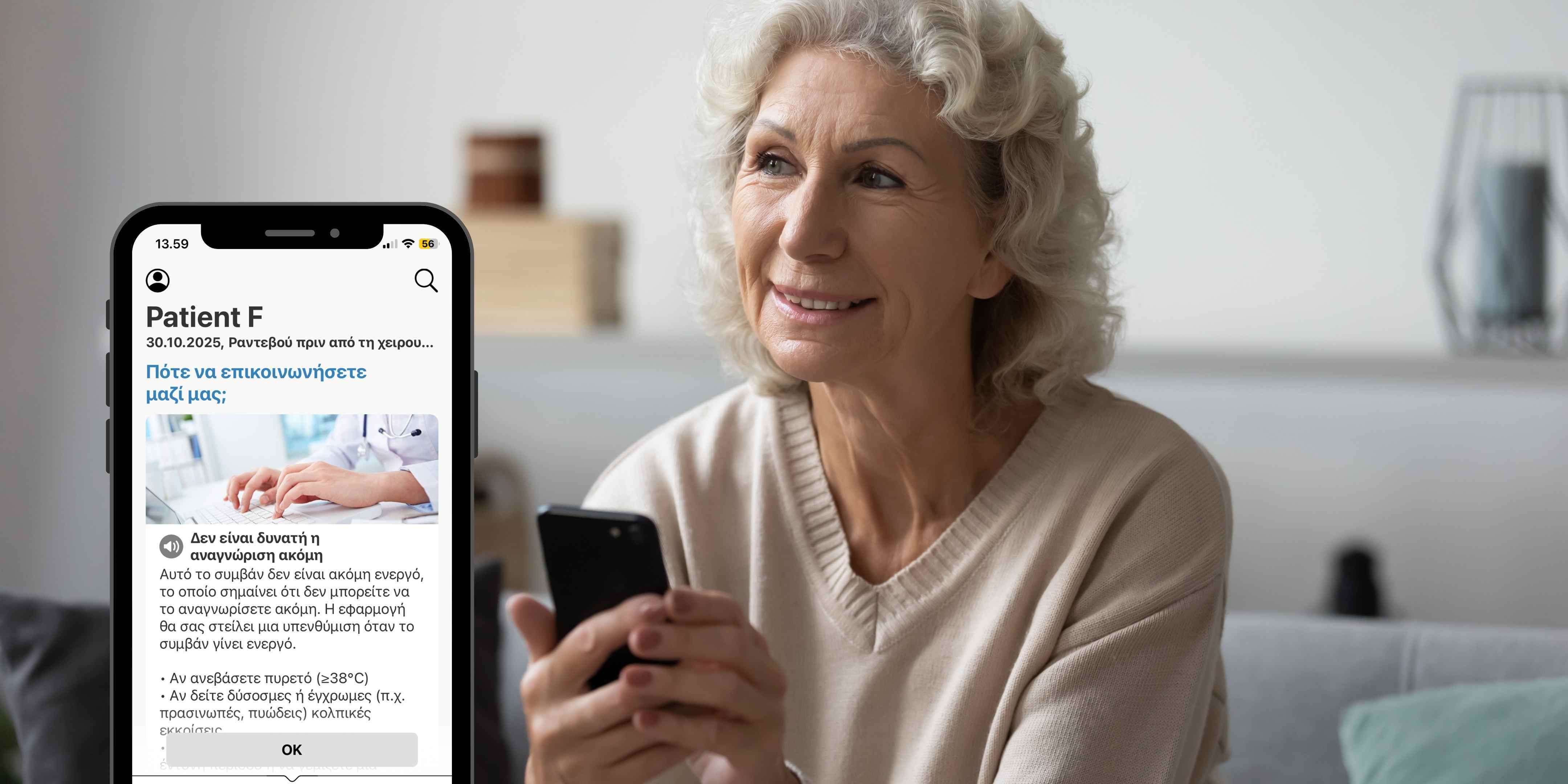When it is clear that a care pathway app should be implemented as a separate mobile app, but at the same time the digital platform is important for, for example, appointments or filling out individual questionnaires, the next question is: How can these two be integrated intelligently without unnecessary complexity?
Instead of trying to make one overly broad app or embedding care pathways into the digital platform using the SDK model, a modular collaboration model can be built where different services complement each other but are not dependent on each other.
In this final blog series posting, we consider how this can be implemented practically, flexibly, and cost-effectively.
Intelligent data exchange between apps
- When a patient has a care pathway app and access to a digital platform, these two must communicate.
Example 1: The Care pathway app directs to appointment booking
- The patient receives a reminder to book a follow-up visit in the care pathway app.
- The app directs them to the digital platform's appointment booking service, where they book an appointment.
- When the booking is made, the information is transferred to the care pathway app, so the patient sees the booking there without having to return to the digital platform.
Benefits:
- The patient does not have to search for the appointment booking function in different apps – they are directed directly to the right place.
- The care pathway app does not try to do everything, but utilises the existing appointment booking system.
Example 2: Filling out questionnaires on the digital platform or web app
- The care pathway app reminds the patient to fill out a questionnaire before the doctor's visit.
- The patient can:
- Fill out the questionnaire directly in the care pathway app.
- Fill it out on the digital platform or web app if they prefer to use a computer.
- When the patient fills out the questionnaire in any channel, the information is updated in the care pathway app.
- If the patient later opens the questionnaire in the care pathway app, they see that it has already been filled out and they do not have to do it again.
Benefits:
- The patient can choose the most suitable way to fill out the questionnaire.
- Data is synchronised in real time, which prevents unnecessary work and potential errors.
Session management: One login, multiple apps
- One significant usability issue can be that the patient has to log in again to different apps. This can be solved with an SSO (Single Sign-On) solution and smooth session management.
How would it work?
- The user logs in to the digital platform.
- The digital platform app directs the user to the care pathway app and also transfers the user's session login information.
- The care pathway app automatically recognises the user, and no separate login is required.
- Of course, this would also work in the other direction: when the digital platform is opened from the care pathway app, the digital platform recognises the user, and no separate login is required.
Benefits:
- The user does not have to log in multiple times, but moving from one app to another is smooth.
- Maintenance is secure and controlled because access control can be centralised to a single login system.
Modular development and minimal dependencies
- For the collaboration between different systems to be flexible and long-lasting, it is important that they are not too tightly coupled to each other. This can be achieved with API-based data sharing rather than using a heavy SDK model.
Solution model:
- The care pathway app works independently and can call the digital platform's interfaces as needed.
- The digital platform is not dependent on the care pathway app, but works independently and serves other systems.
- API connections enable flexible integration, allowing, for example:
- Automatically retrieving appointment information or other data to the care pathway app.
- Synchronising questionnaire responses between different services.
Important:
- No SDK dependency – each service evolves independently.
- No monolithic app – apps are not tied to each other, but can live their own lifecycles.
-
-
Summary: How to act intelligently?
The best solution is a modular, API-based collaboration model rather than combining everything into one app or implementing care pathways as an SDK.
How Does This Work in Practice?
- The care pathway app guides the patient but does not do everything itself.
- The digital platform handles appointments and other general functions but does not tie care pathways to itself.
- Data is synchronised via API connections so patients can use different channels smoothly.
- SSO and session management make the transition effortless, and the user does not have to log in to different apps again.
This solution ensures that:
- The care pathway app remains lightweight and functional.
- The digital platform can evolve independently without care pathway dependencies.
- The patient experience remains smooth and user-friendly.
This approach combines the best aspects of different models without their drawbacks. It is a cost-effective, scalable, and future-proof solution for hospitals' care pathways.
Are you interested in the other articles in our technical blog series? They are listed below:
Mobile app or web for the patient?
One app or multiple apps? All functions together or separately?
Care Pathway as an SDK for a Digital Platform – Is it a viable option?



